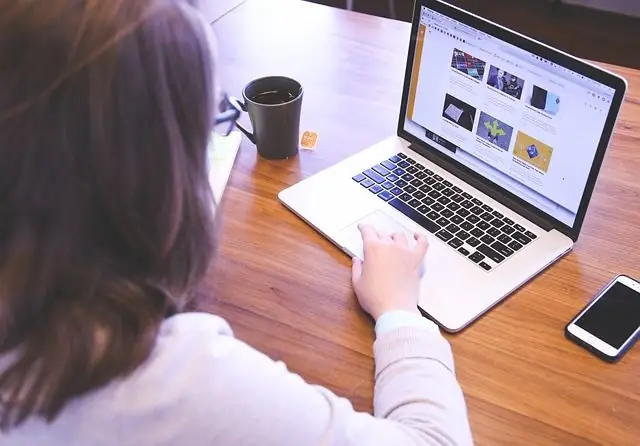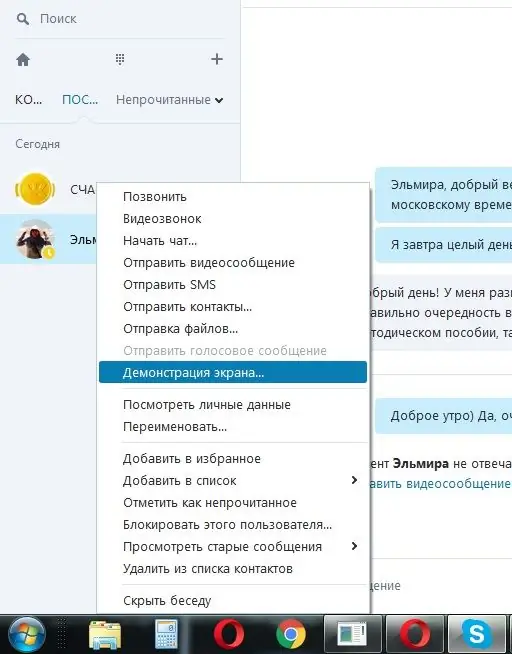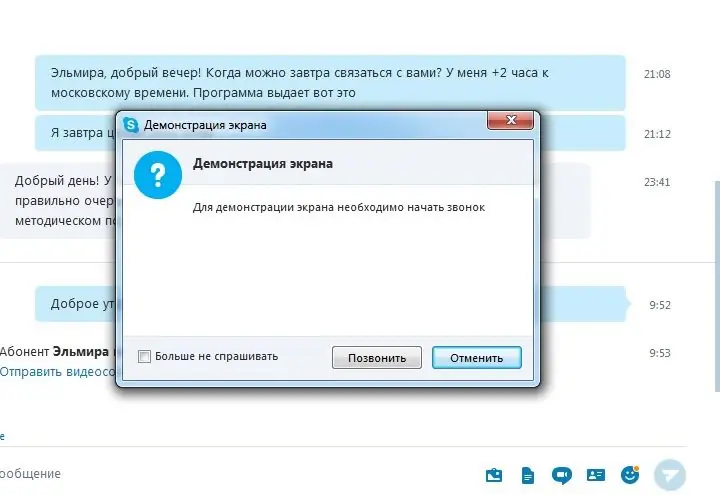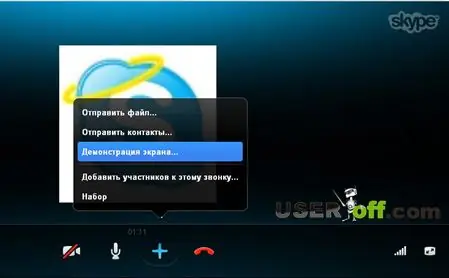- Author Lauren Nevill [email protected].
- Public 2023-12-16 18:48.
- Last modified 2025-01-23 15:15.
It often happens that we need remote help with a computer: we need to install a program, remove a virus, or do something else that we ourselves cannot do. In this case, you can show the desktop during a Skype call and perform the necessary actions under skillful guidance.

Experienced users also sometimes resort to this method when they turn to someone much more advanced in these matters. If you are in the role of "non-advanced" - this advice is for you.
During screen sharing, the person who helps can give a lot of useful tips: help you install drivers, uninstall or install programs, give advice on checking your computer for a virus, tell you about the settings of the same Skype, and much more. This assistance can be provided in two ways:
Method one:
We open skype and find in the list on the left the person to whom we want to turn for help. Right-click on his name (or surname, or login) and see the following plate:

We click with the mouse on the line "Screen sharing". Note: different versions may have different phrases, for example "Show screen". However, everything is intuitively clear - what needs to be done for the interlocutor to see the screen of your computer. Just follow the sequence of actions and you will succeed.
After that, another sign will come out - here it is also absolutely clear what to do:

Now you need to click on the "Call" button. After the interlocutor connects to the conversation, he will see your screen and will be able to give any advice.
Second way:
If you need to show the screen, you can do it in another way: click on the plus sign under the video, and in the window that appears, click on the line "screen sharing", and then on "start".

The interlocutor now sees your desktop, and also sees all the manipulations that you perform with your computer. Now he will be able to tell you a lot of useful things and help you cope with difficult problems.






